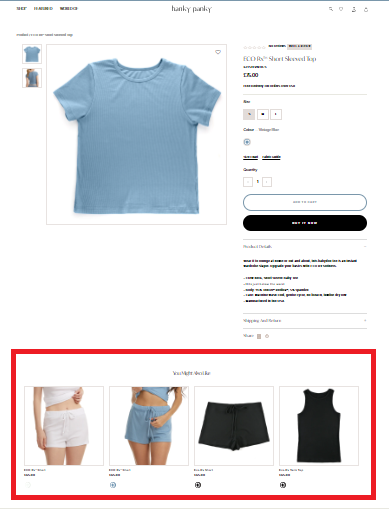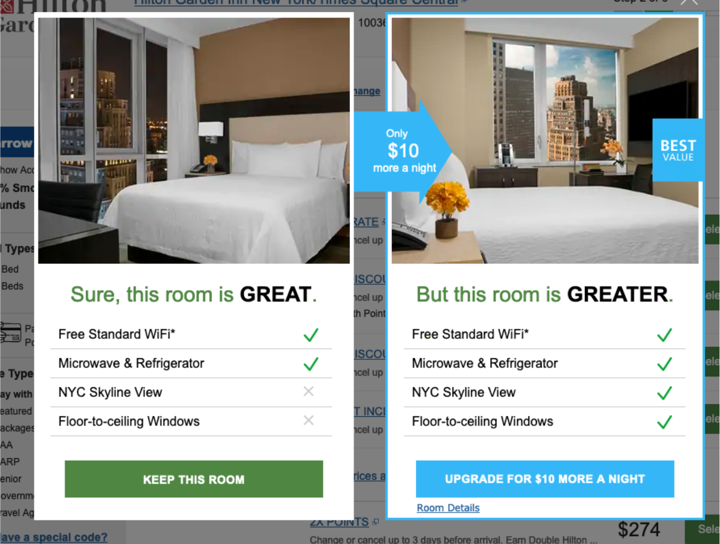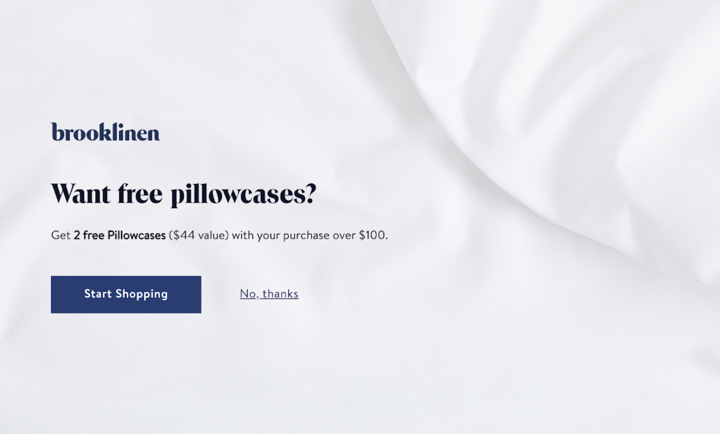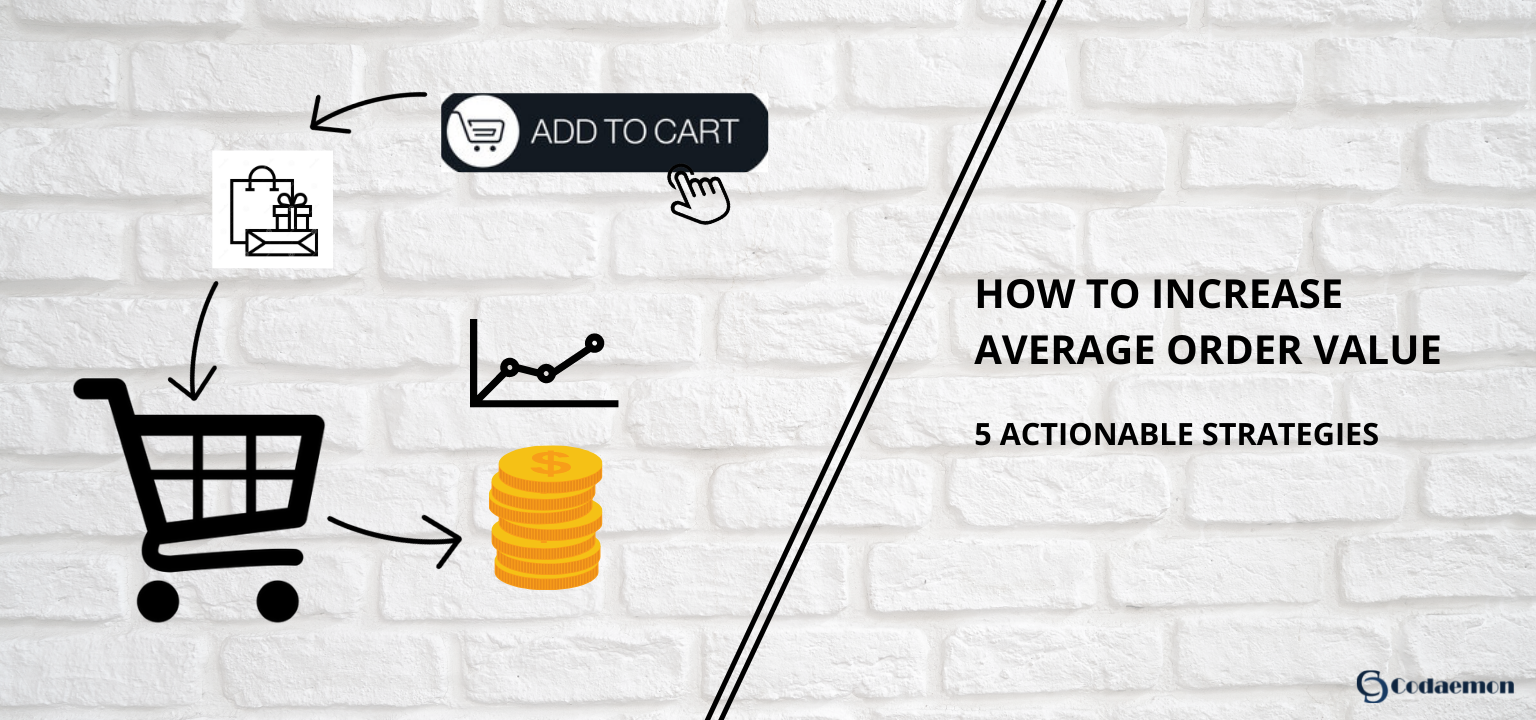5 Easy Formulae to Increase Average Order Value in 2022
The average order value is the first metric that business owners monitor for growth. Look at it this way. You launch an e-commerce store. You spend heavily on marketing. That gets traffic through the door. This traffic also converts into customers. That’s fantastic. But here goes the fine print – order values.
A consistently small order value per customer does not justify the money you spend to bring them to your site. It stretches your payback period. Even if you’re okay with a long payback time, just breaking even with the customer acquisition cost doesn’t cut it. So here comes another problem – profitability. The longer it takes to build consistently increasing average order value, the more your profitability sinks into deep water.
Not a great place to be.
But hold up. What is this average order value that’s causing so much trouble?
Let’s say the total value of orders placed in your online store is $1000 in a month. Divide that by the total number of orders and you have your average order value (AOV) for the month. Now let’s say, your AOV per customer per month is $10 and you spend $12 per customer as acquisition cost. The idea is to get each user to spend at least $15 to be profitable.
There’s another way to look at this. You get both high and low-value orders in a month. While the high-value ones skew the AOV up, it’s the frequently occurring order values that keep the pace going. So, instead of focusing on each of your order values, it’s logical to devise ways to increase the frequently occurring values to turn a higher profit.
Following are a few innovative and tested ideas to increase average order value.
1. increase AOv with Cross-sells and Upsells
These are the most used rules in the book to crank up the order value. But it’s important to do them the right way to get the most out of them. First of all, cross-selling should not be confused with upselling.
Cross-selling is a “Would you like fries with your burger?” approach. And upselling looks more like getting a customer to buy a (higher-priced) noise canceling earbud when they had planned to get a standard one.
Let’s talk about cross-sell first.
Cross-selling suggests products that complement a chosen product.
Some surefire ways to hit it off:
- Relevance is everything. When a user is buying an Xbox One, there is no point in suggesting Xbox X games without Smart Delivery. For an apparel store, a great way to cross-sell is by introducing the “Shop The Look” feature. So when a customer is looking at a top, you also suggest the skirt and the shoes. If you are selling candles, offer candle holders and matches.
No one does cross-sell as nicely as Amazon.


Source: Amazon
- This brings us to the next question: How many cross-sell products should I display? The short answer is – only the highly relevant ones. Even if it is just one. This means the product suggestions need to be dynamic based on the number of high-relevance items that the store logic can identify.
- Do not show alternate products. This will only lead to users second-guessing themselves and quitting the checkout flow to pursue the other product. Not what we want.
- Label product recommendations clearly to improve interpretation accuracy. If you are cross-selling on the product details page, here are some clear labels you can use:
- Inspired by Your Browsing History
- Frequently Bought Together
- Complete the Look
- Other Products in This Collection
The following image shows a commonly used “You Might Also Like” cross-selling option on one of our client’s websites. Read the case study here.


Source: Hanky Panky
Now let’s talk about upselling. Upselling can look like version upgrades, extended warranty, chargeable customizations, etc.
Upselling suggests a more expensive or premium version of a chosen product or an add-on to increase order value.
Some ground rules:
- Customers can smell an upsell. They will always look at the price tag no matter how subtly you place it. If the cost is high, they won’t bite. So you need to keep the upsell value low to increase the chance of purchase. If you are upselling before purchase, ensure that the price difference is comparable to the value of the original product. For example, let’s say a customer has chosen a product that costs $100. The product you want to upsell shouldn’t be more than $150 otherwise you are just missing the point.
- This brings us to the next point – show the benefit clearly. If you want the customer to shell out an extra $50 when they had planned to stay at $100, you should give them a proper reason why. Hilton does upselling beautifully to increase average order value.


Source: Wonderment
- If you are upselling after purchase, keep the cancellation window open for longer and make the cancellation process easy
- What’s better than an upsell? Personalized upsell. Customers feel valued when you take their preferences into account while suggesting stuff instead of showing them a bunch of random items just because they go together with the product of interest. For example, if a customer with a purchase history of vegan food with your store is ordering a basic pizza, you can suggest vegan toppings for a small additional fee instead of non-veg ones to increase your average order value.
2. Offer Value in Exchange for a Higher Spend
This is a straight-up way to boost your average order value. When customers feel that they are getting something in return, they would be glad to spend a little bit more. But this entirely depends on what you are offering.
- Free shipping is an effective nudge. Paying for shipping is always a thorn in the side. People contemplate buying things online just because of the extra delivery cost that they have to cough up. When you remove that, it makes customers more comfortable to shop in your store. Use a plugin to show them how much more money they need to spend to qualify for free shipping. You can also go the extra mile to suggest products (cross-sell) that they can consider.
- Offer a free gift from your product lineup. This is especially useful for businesses that operate in a niche. For example, the following image shows how a luxury bedding store offers a free pillowcase set on a minimum expenditure. Also note, the price of the free gift is mentioned which makes customers feel that they have a great deal.


Source: Wonderment
- Offer a discount on the total cart value when the threshold order value is reached
- Offer a gift card. For example, if your threshold price is $30, offer a $5 gift card that customers can use for the next purchase.
Now the question is, how would you determine the free offer threshold? Look at the frequently occurring order values. If it is less than your average customer acquisition cost, you know what to do. Keep in mind that by offering freebies/discounts, etc., your business might be taking a small blow. To prevent that, you need to analyze your profit margin to finalize the free shipping purchase amount.
3. Promote Pay Later Option
Which seems more sustainable? Paying $50 a month for 4 months? Or, $200 in a single day?
The point is, one of the primary reasons why customers shy away from a sizable cart value is because of the sizable cart value that they have to pay upfront. Once you take the “upfront” part out of the equation, things get a lot easier – without your customers even realizing it.
Think of it this way. Let’s say you stock big-ticket items in your store. For example, high-end gaming PCs. Everyone wants to own one but only a few can afford it. So your price tag is an obstacle that’s keeping you from tapping into the paycheck-to-paycheck income group. This is where Buy Now Pay Later (BNPL) does a crucial job. It breaks down the price barrier into small installments that can be paid off over a long period of time. And just like that, your PCs become affordable and many people’s dreams, achievable.
Isn’t that something?
Take a leaf out of Monoprice’s BNPL book to get things going. Monoprice is an electronics retailer with products ranging from $20 cables to $4000+ audio systems. This company used to clock an AOV of $90 until they started implementing BNPL in 2019. After the adoption, their AOV saw a quick 400% boost with average order values climbing up to $400 – $500.
That’s all great. But isn’t BNPL a little too tech-y for older age groups? Won’t that hurt my conversions?
Short answer – No.
At least that’s what studies show. The following graph shows the rising adoption of BNPL among Gen Z, millennials, Gen X, and Baby Boomers.
Source: Forbes
If that isn’t telling, I don’t know what is.
4. offer Tiered Loyalty Programs
Most business owners see loyalty programs as a way to increase Customer Lifetime Value. But it’s also a great way to increase average order value if done correctly. Think ‘tiered’ loyalty programs.
Who doesn’t want to be a VIP? Or a platinum member, right? Everyone wants to reap those benefits that come with a higher-tiered membership – so much so that the sense of how high the spend is to reach that status takes a backseat.
Take Nordstrom’s Nordy Club loyalty program for example. Customers earn a status based on their expenditure and this status determines the benefits they reap.


Source: Nordstrom
Tiered loyalty programs sort of gamify the shopping experience, enabling customers to move up the ladder with every purchase they make. And in doing that, the AOV increases while customers leave happy. Plus it doubles up as your customer retention strategy which cuts back on your customer acquisition cost. That’s a win-win in every book.
Customer acquisition is 5 times costlier than retaining a customer.
5. increase average order value with Bundle Deals
This one is pretty much self-explanatory. Bundling can be thought of as an offshoot of upselling. Grouping certain products together with a discounted total cost is an offer customers generally don’t pass up. But you need to be smart about pairing products while keeping your profits in mind as well. Here are some strategies:
- It’s best to put complementary products together. For example, a bundle for a backpack can include extra straps, locks, and a rain cover.
- That said, you should also list the bundle products separately. This serves two purposes – first, it enables users to buy them separately in case they don’t need the deal and secondly, it allows users to view the extra money they have to shell out if they purchase them separately.
- While creating bundles, look at your customers’ related purchases. This will yield better results than going by your hunch.
- Go the extra step and offer your customers to customize their bundles and subscribe to them
- There is no hard and fast rule for pairing high and low-value items or similar value items in a bundle. Keep two things in mind while creating an AOV-boosting bundle – customers’ benefit and your profit margin.
Skincare brand, Murad emphasizes the money a customer will save if they choose to bundle.


Source: Murad
Conclusion
The best part about focusing on increasing average order value is that you are focusing on users who have already converted and are willing to buy more. That makes your job easy by removing half of your barriers. All you need to do is nudge them along a little in the direction of spending a little more in exchange for certain benefits. These strategies are easy to implement and will increase your AOV in the shortest time. However, test the waters first by implementing one strategy at a time and see what works for your store instead of going at them all at once.
But for any of these strategies to work, it’s crucial to have a practically built site that is user-friendly and responsive. If you feel that your UI needs some work, our experts can help you identify the issues and suggest recommendations for free. Send us your query and we would be happy to help you out.



